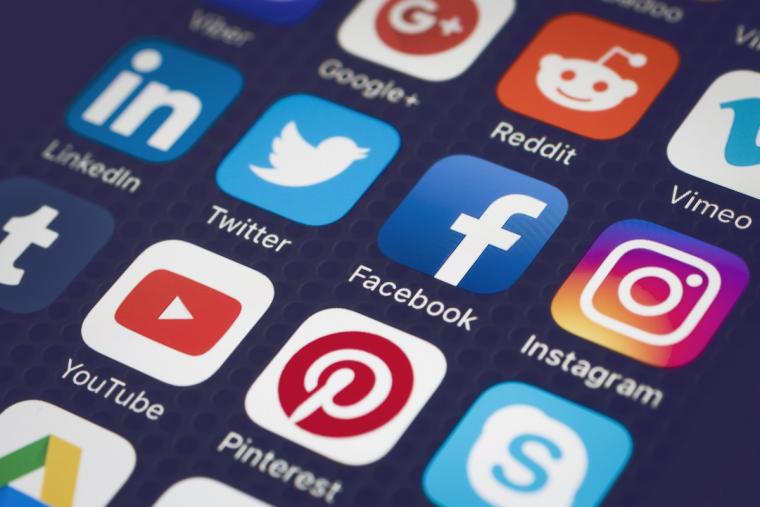

Social media provides a cost-effective means for a rights or property owner to effectively promote an event or destination. As part of a comprehensive marketing campaign, publishing content on various platforms provides an avenue to increase awareness, engagement and potential traffic for an event while also showcasing a geographic location.
Examining marketing considerations and opportunities for the 2024 Pan-American Masters Games in Cleveland, Ohio, for example, exemplifies the value and practicality of social media for communicating the right message to the right audience.
The Pan-Am Masters Games are branded as a prestigious and competitive multi-sport event celebrating senior athletes from North, South and Central America. The Pan-Am brand aims to evoke a sense of pride and excitement while also highlighting the unique cultural and geographic diversity of the participating Nations. Following are the key branding elements and strategies to use in a social media marketing plan.
• The Pan-Am Games Logo: The logo will typically feature the name “Pan-Am Masters Games” in bold, stylized lettering and an iconic symbol representing the event’s location or theme.
• Colors: The event’s brand colors are usually chosen to reflect the colors of the participating Nation’s flags and the host city’s natural beauty and vibrancy.
• Tagline: The event should include a tagline that encapsulates the mission and brand message of the event. “Celebrating the best in senior athleticism in America” or “Celebrating the best in senior athleticism in Cleveland, Ohio, 2024” are two examples.
• Visuals: The event should use a broad range of visual elements that include videos and photos of past games, athlete profiles, promotional graphics and unique Cleveland profiles about the host location to showcase the event’s unique identity.
An important pre-event marketing activity is solidifying co-branding partnerships with businesses and organizations. Partner hotels, restaurants and attractions in the Cleveland area provide access to their own social media accounts for cross-promotions. Posting content on a webpage and social media accounts of local attractions also extends the publicity reach to an existing follower base that may have an interest in visiting the city and the Games.
Best Practices

The following best practices for harnessing social media to promote events and destinations can potentially increase ticket sales, garner brand presence and effectively market the Pan-Am Games 2024.
1. Define target audience(s): The target audience for the Pan-Am Masters Games could include senior citizens, senior athletes, individuals who enjoy traveling, sports enthusiasts and individuals who are interested in supporting senior athletes. In this scenario, the target audience consists of individuals aged 50 and over interested in fitness, travel and sports with access to disposable income to spend on event tickets and travel. Numerous data tools are available to help define a target market and ultimately make data-driven decisions, including ESRI, the U.S. Census Bureau, etc. There are numerous strategies to reach the target audience.
a. Geotargeting and segmentation: Geotargeting will capture individuals living within a certain radius of Cleveland or those who recently visited the city, allowing for a custom message to reach people who are more likely to attend the event since they are in or familiar with the local area.
b. Lookalike targeting: A lookalike targeting campaign uses a predictive analytics model that identifies and reaches the audience of a similar event.
c. Retargeting: Retargeting involves publicizing to individuals who have visited the Pan-Am Masters Games event website or have shown interest on existing social media platforms but have not yet purchased tickets. Call-to-action posts should encourage the completion of a purchase or a request to attend.
2. Create a content calendar: Content calendars outline the type of content, dates and posting frequency for each platform. The content should include athlete profiles, behind-the-scenes footage, the countdown to the event and an event announcement. Creating content in advance assists in creating consistent messaging and helps tremendously when times get busy.
3. Choose social media platforms based on your target audience: It is vital to select the social media platforms that are the most popular to the target audience.
a. Facebook: With over 2.8 billion monthly active users, Facebook is a great platform for targeting a broad range of audiences, including highly active older audiences. Facebook’s advertising tools can target users based on their behaviors, demographics and interests, making it an ideal platform for reaching individuals who are interested in sports, travel and fitness.
b. Instagram: Instagram has over one billion monthly active users, making it a popular platform for visual storytelling.
c. LinkedIn: LinkedIn has over 740 million members, which would make it an effective platform for targeting professionals and individuals interested in helping to promote the event to executives, sponsors and corporate partners in Cleveland.
d. Twitter: Twitter is a real-time platform with over 330 million monthly active users. Event marketing works well on this platform because it allows the ability to reach a broad audience and monitor trending topics using short memorable hashtags (#Cleveland2024).
e. YouTube: YouTube has over two billion monthly active users making it the largest video streaming platform in the world. Creating engaging video content that showcases the Pan-Am Masters Games will help garner excitement for the event and reach an extremely large audience.
4. Create content for each platform: Create engaging and informative content for each social media platform. Facebook and Instagram can serve as tools to help share images and videos of the event, behind-the-scenes footage and athlete profiles. Real-time updates and live tweets can be posted on Twitter as events occur.
5. Use influencer marketing: Partnering with influencers and senior athletes to promote the event may assist in engaging an audience.
6. Use hashtags: Hashtags unique to the event can help create engagement and visibility and are also a means to track engagement.
7. Incorporate social media contests: Requesting followers on a social media account and rewarding the most creative answers with a ticket to the event or promotional swag can drive interest, however, it is vital to check the legal guidelines set forth by each platform before running a contest.
8. Include a “Call to Action” plan: Action-oriented language such as “get tickets now” assist efforts.
9. Set a dedicated ad budget and invest in paid advertising: There are many types of promoted ads on social media that include sponsored posts, promoted tweets, Instagram story ads, Google paid advertising, etc. Investing in paid advertising also helps ensure ads and messages reach the right target.
10. Consistently evaluate the effectiveness of your plan: Social media analytics track a plan’s performance and allows the marketing director to quickly adjust strategies accordingly. There are many monitoring tools and metrics for each platform to monitor reach, click-through rates and engagement.
Activation
Once a plan is set and activated, the weeks leading up to the games and during the games can be used to continue increasing engagement and visibility. Marketers should be consistent with creating content and have a team in place to livestream elements using YouTube, FB Live or Insta Stories. Behind-the-scenes footage using interviews with athletes and highlights of key events will make the livestreaming experience more engaging for viewers.
When choosing a livestream host, consider the platform’s audience, accessibility and features, and hire or designate a professional livestream team with the prerequisite knowledge of the most effective camera placement, audio devices and other technical details. Finally, promoting the livestream in advance will build anticipation and increase the likelihood that viewers will tune in on the day of the event.
The Greater Cleveland Sports Commission will likely use these and other strategies to market the 2024 Pan-Am Masters Games before, during and after the event. By harnessing the power of social media, the Games will boost tourism, promote a healthy and active lifestyle, engage the community and leave a legacy for the city of Cleveland. SDM


